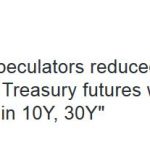People are still losing their minds over “passive investing”. Here’s the CEO of a high fee fund management company complaining:
“Passive investors don’t engage the market with finely tuned attention to each company. They don’t help allocate capital specifically to well-run companies with competitive advantages and long-term growth prospects. Nor do they invest in discovering price disconnects between securities, undervalued assets, or future innovators.”
Lots to unpack there. Let’s go one sentence at a time because this is a big ole’ hot mess of words:
“Passive investors don’t engage the market with finely tuned attention to each company. “
We should get this out of the way upfront – there’s no such thing as pure passive. I won’t get into this for the billionth time here so go read this long diatribe about it if you care to. That said, let’s use his term “passive” to be consistent.
Passive investors (what are actually low fee low activity indexers) do not believe in stock picking so of course they don’t engage in paying attention to each company.
“They don’t help allocate capital specifically to well-run companies with competitive advantages and long-term growth prospects.”
This is simply untrue. The S&P 500, for instance, is an index with specific rules constructed by Standard & Poors. When a company fails to meet those standards the index drops the company and all the ETFs or other index funds that mimic the S&P 500 will do the same. An index fund tries to track the performance of its underlying companies. For instance, when Enron blows up there will always be more active investors taking the other side of index fund buying that will push the price of Enron to $0. The fact that Enron is in the index is irrelevant to Enron’s business success. If the company fails there will be active investors who arbitrage the other side of the index fund’s buying and they will earn a profit driving Enron to $0.












Leave A Comment